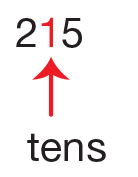Students focus on grouping quantities by ten and counting the leftovers. To work with a large number, students predict the total number of letters in the first names of all students in the class then use connecting cubes to compare the total to 100. Students then recognize that 100 is 10 groups of ten.
Content in this Lesson
- Predicting the total number of letters in first names in the class.
- Grouping and counting objects by tens and ones left over.
- Representing 100 as 10 tens.
- Representing and identifying numbers to 100 using counters, 100 Chart, drawings, and symbols [E1].
- Representing the partitions of two-digit quantities as tens and leftover ones [E2].
- Comparing quantities and representing that relationship using less than, greater than, between (e.g., intervals), and closer to [E3].
- Collecting and organizing information in a data table [E6].
- Reading a table to solve problems about a data set [E8].
- Explaining your thinking [MPE5].
Assessment in this Lesson
| Assessment | Expectation Assessed |
|---|---|
|
Comparing Names Student Activity Book Pages 289–290 |
|
















